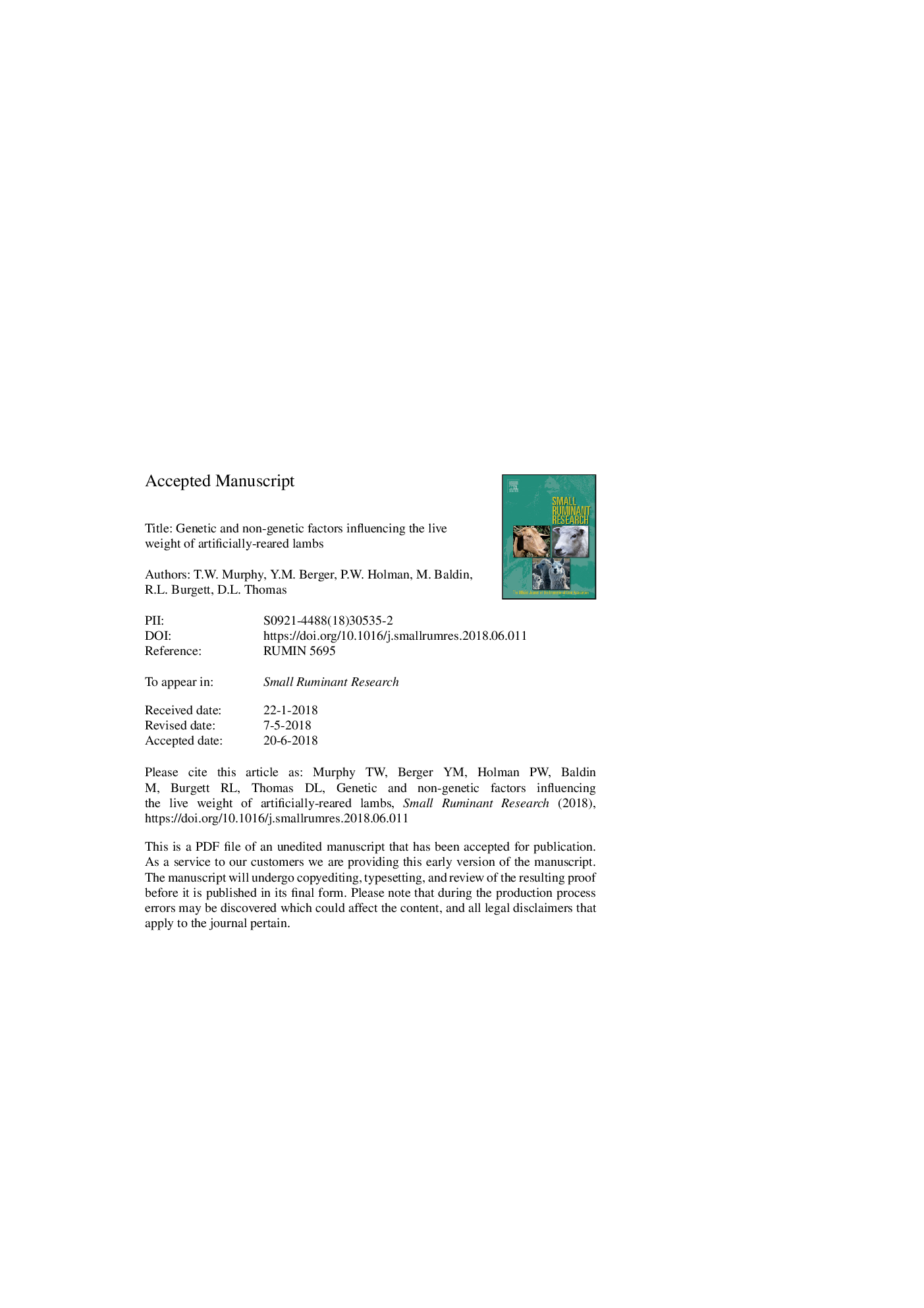| Article ID | Journal | Published Year | Pages | File Type |
|---|---|---|---|---|
| 8504124 | Small Ruminant Research | 2018 | 14 Pages |
Abstract
The Spooner Agricultural Research Station (ARS) of the University of Wisconsin-Madison housed the only dairy sheep research flock in North America at the time of its closing in 2016. Multiple experiments conducted at the Spooner ARS determined that raising dairy lambs on milk replacer can be profitable and has since become a common practice in many U.S. dairy flocks. While the genetic basis of early growth traits in naturally-reared lambs has been extensively researched, little is known about the extent to which direct and maternal additive effects influence these traits in artificially-reared animals. The traits analyzed were birth weight (BW0) and 30 d adjusted weaning weight (BW30). Univariate models first determined the significant non-additive genetic effects on BW traits. Lacaune breed composition negatively affected (P < 0.01) both BW traits. Individual heterosis positively influenced (P ⤠0.04) both BW traits, but only BW0 was positively influenced by maternal heterosis (P < 0.001). A bivariate model was used to estimate genetic and non-genetic relationships among BW0 and BW30. The estimated direct heritabilities of BW0 and BW30 were 0.27 ± 0.04 and 0.39 ± 0.05, respectively. The higher than generally reported heritability for BW30 was likely due to a decrease in environmental variation associated with artificial rearing. Lamb BW traits were estimated to be highly phenotypically (0.54 ± 0.02) and genetically (0.63 ± 0.07) correlated. Additive maternal genetic effects explained a substantial proportion of the phenotypic variation of BW0 (0.25 ± 0.02). Although only artificially-reared lambs were included in the analyses of BW30, additive maternal genetic effects were non-zero (0.13 ± 0.02). The sale of market lambs represents a significant source of revenue for U.S. dairy sheep producers, and knowledge of the factors affecting lamb performance has important economic implications.
Related Topics
Life Sciences
Agricultural and Biological Sciences
Animal Science and Zoology
Authors
T.W. Murphy, Y.M. Berger, P.W. Holman, M. Baldin, R.L. Burgett, D.L. Thomas,
